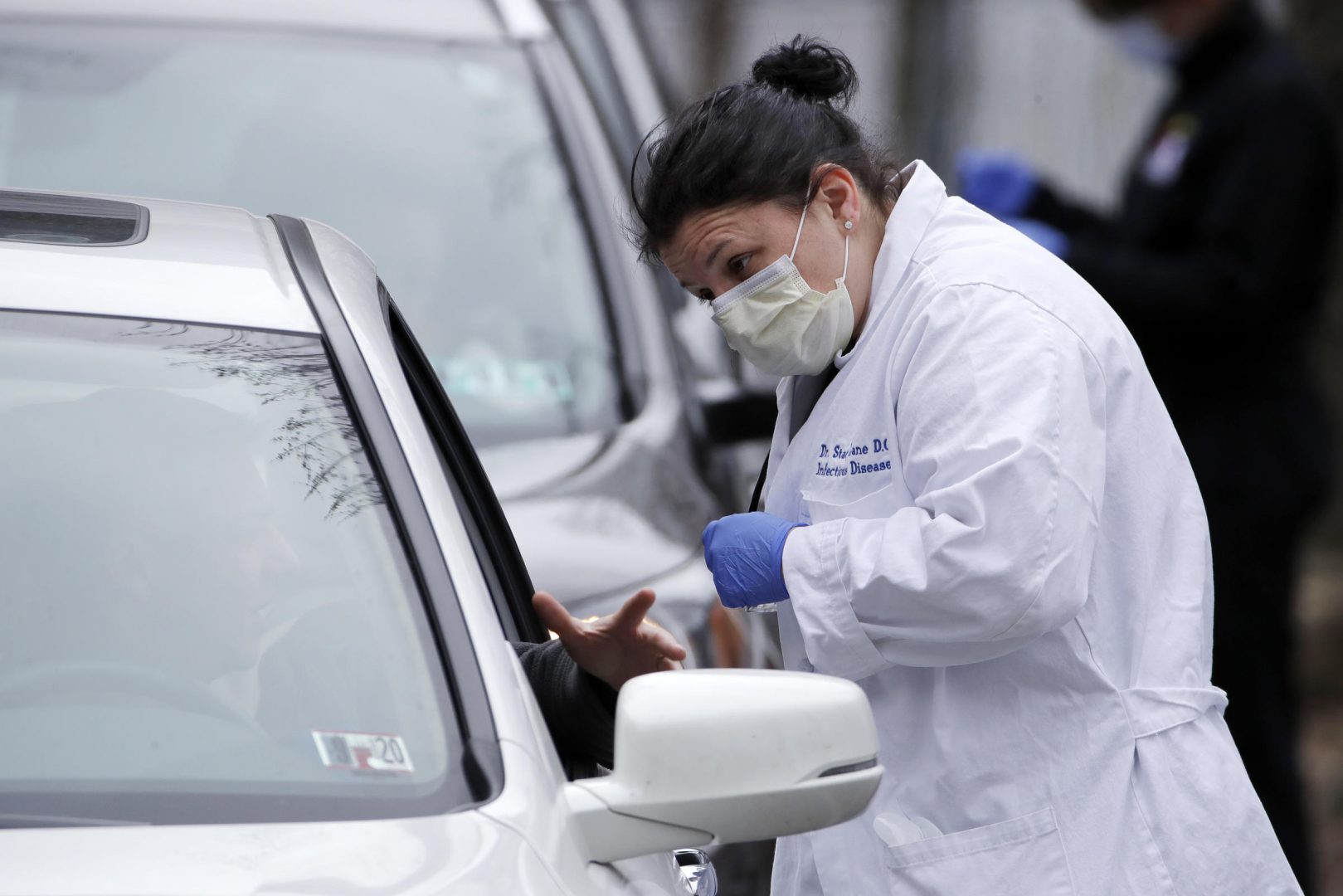
Cars line up outside the Central Outreach Wellness Center on the Northside of Pittsburgh Monday, March 16, 2020, for drive-by testing for COVID-19.
Gene J. Puskar / AP Photo

Cars line up outside the Central Outreach Wellness Center on the Northside of Pittsburgh Monday, March 16, 2020, for drive-by testing for COVID-19.
Gene J. Puskar / AP Photo

Gene J. Puskar / AP Photo
Cars line up outside the Central Outreach Wellness Center on the Northside of Pittsburgh Monday, March 16, 2020, for drive-by testing for COVID-19.
What you should know
» Coronavirus facts & FAQ
» Day-by-day look at coronavirus disease cases in Pa.
» What the governor’s stay-at-home order means
The Allegheny County Health Department has begun breaking down COVID-19 deaths and hospitalizations by race – something that activist have been demanding in recent days amid concerns about infection rates among African Americans nationwide.
As of Saturday morning, the county said, one of the 19 fatal cases of the disease involved a black patient. The other 18 were white. Of the 130 people who have been hospitalized for the disease, 80 were white and 22 were African American. That means African Americans, who make up 13.4 percent of the county’s population, make up just under 17 percent of those hospitalized for the disease.
But the county was unable to obtain racial data for 23 of those hospitalized (five other patients were classified as “other”) which means African Americans make up 20.5 percent of hospital cases where the race of the patient was known.
There has been growing concern about COVID-19’s racial impact. In Milwaukee County, for example, African Americans make up three-quarters of those who have died from the disease – triple their share of the overall population. Death rates among African Americans have soared in places like Louisiana and Detroit as well. There have been special concerns locally, given Pittsburgh’s poor performance when it comes to black health outcomes.
Longtime Pittsburgh civil-rights activist Tim Stevens said the numbers were “good news compared to some of the other cities we’ve been looking at. I’m glad to hear that the statistics aren’t totally out of alignment the way they are in other regions, and I hope it stays that way.”
Still, he said the lack of data of who was being tested — and a nationwide dearth of testing itself — meant the demographics bear further watching. “The problem is that none of us know. That’s where the national leadership failed us as a country.” There have been local efforts to address disparities in health-care access for a decade, he said, and yet “there has been little or no progress” in addressing them.
The county acknowledged that concern in its statement Saturday.
“Communities of color already have poorer health outcomes in Allegheny County, and it is critical to know if COVID-19 is affecting those communities to a greater degree,” said the county Health Department Saturday morning. It noted there were challenges in compiling the information, and that it couldn’t provide a racial breakdown for those tested for the disease: Half those records were missing data, it said. Testing is handled by multiple organizations. But the county said it would continue to provide the racial data it had for deaths and hospitalizations in the days ahead, and said it was “developing strategies using other demographic information to evaluate inequities.”

A collection of interviews, photos, and music videos, featuring local musicians who have stopped by the WITF performance studio to share a little discussion and sound. Produced by WITF’s Joe Ulrich.
The days of journalism’s one-way street of simply producing stories for the public have long been over. Now, it’s time to find better ways to interact with you and ensure we meet your high standards of what a credible media organization should be.